With the COVID-19 outbreak, to thrive in a business environment you are required to thrive online. With that being said, the digital assets of your business are becoming more and more important as the time goes by. But what kind of digital product will suit your business the most?
There is an abundance of different technology and digital products, tailored for specific problems you may face. But even though there is an abundance, IT is still exponentially growing.
Why may you ask?
Because to get the most out of your digital products, you need them to be tailored to your specific needs.
When talking about digital products, people usually associate them with web or mobile applications and wonder why they should have a digital presence if the app doesn’t make sense for their business. There are other tools that can prove useful for your business.
These are tools used to manage different aspects of your business, not for the end customer but for your employees and departments. For example this can include your product data or the tools for your marketing efforts. Potential for these tools is limitless, especially if you decide to go the open source route (you should, as we’ll discuss in next chapter)
In this blog we are going to cover 6 different types of digital products that can be implemented for any size business.
If you have any questions regarding the topic, feel really free to contact me anytime!
But for now, let’s dive right into the article!
The rise of the open source software
You probably heard somewhere for open source software, but you are not sure what it is. Simply put : it is a software with its source code available to anyone. With source code being a human written text in a specific programming language.
Open source software allows anyone with the right skillset to read, change, and improve upon the source code to tailor it to their needs.
Survey from 2018 by Statista states that some of the biggest supporters for open source software are companies like Google and Adobe. And we all know they are tech giants which shape the industry. Of course other smaller organizations like MongoDB Inc. which also contributes to development of popular open source products.
With this survey they expect the projected revenue of open source to rise to 32.95 billion $ until 2022.
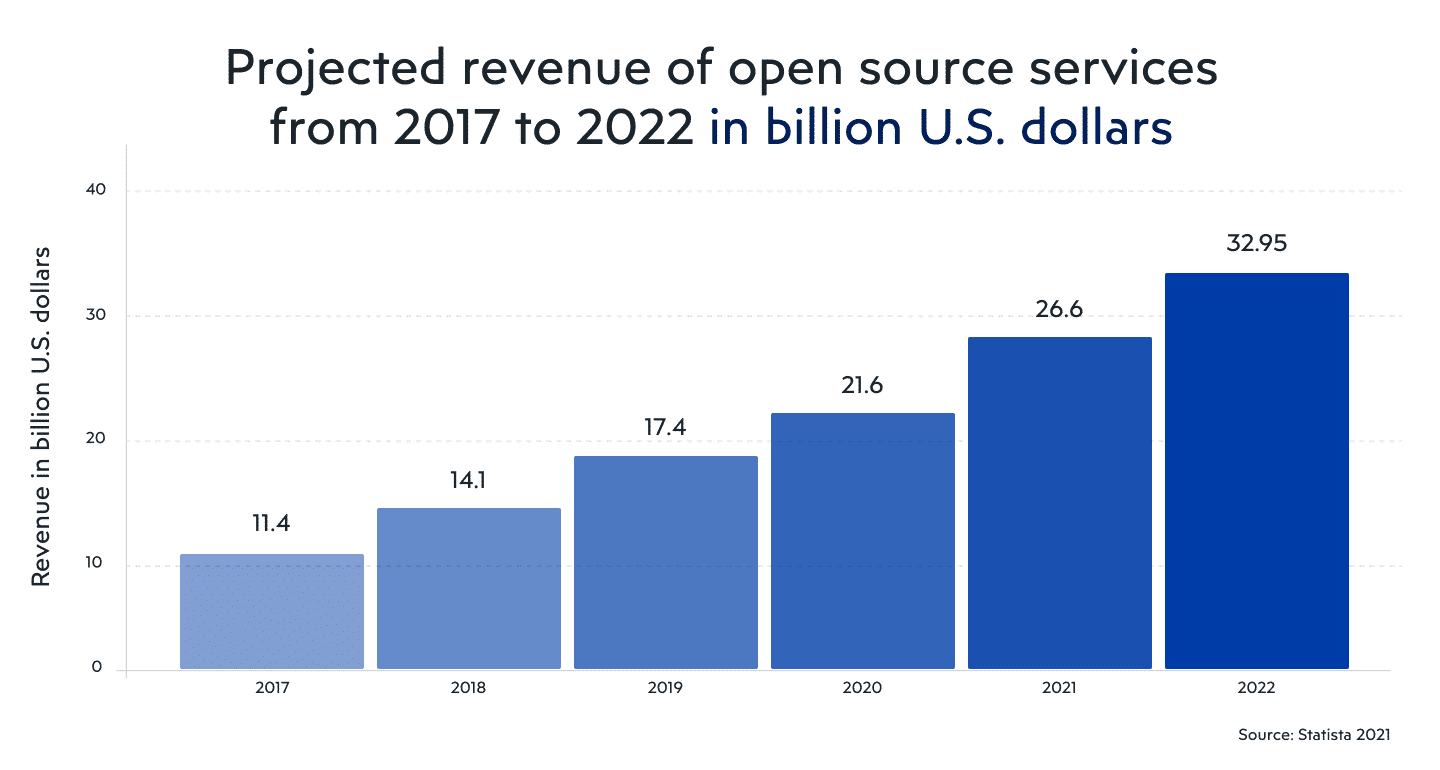
Why is open source software rising in popularity, what makes it better than standard commercial software?
One word – Community
Community
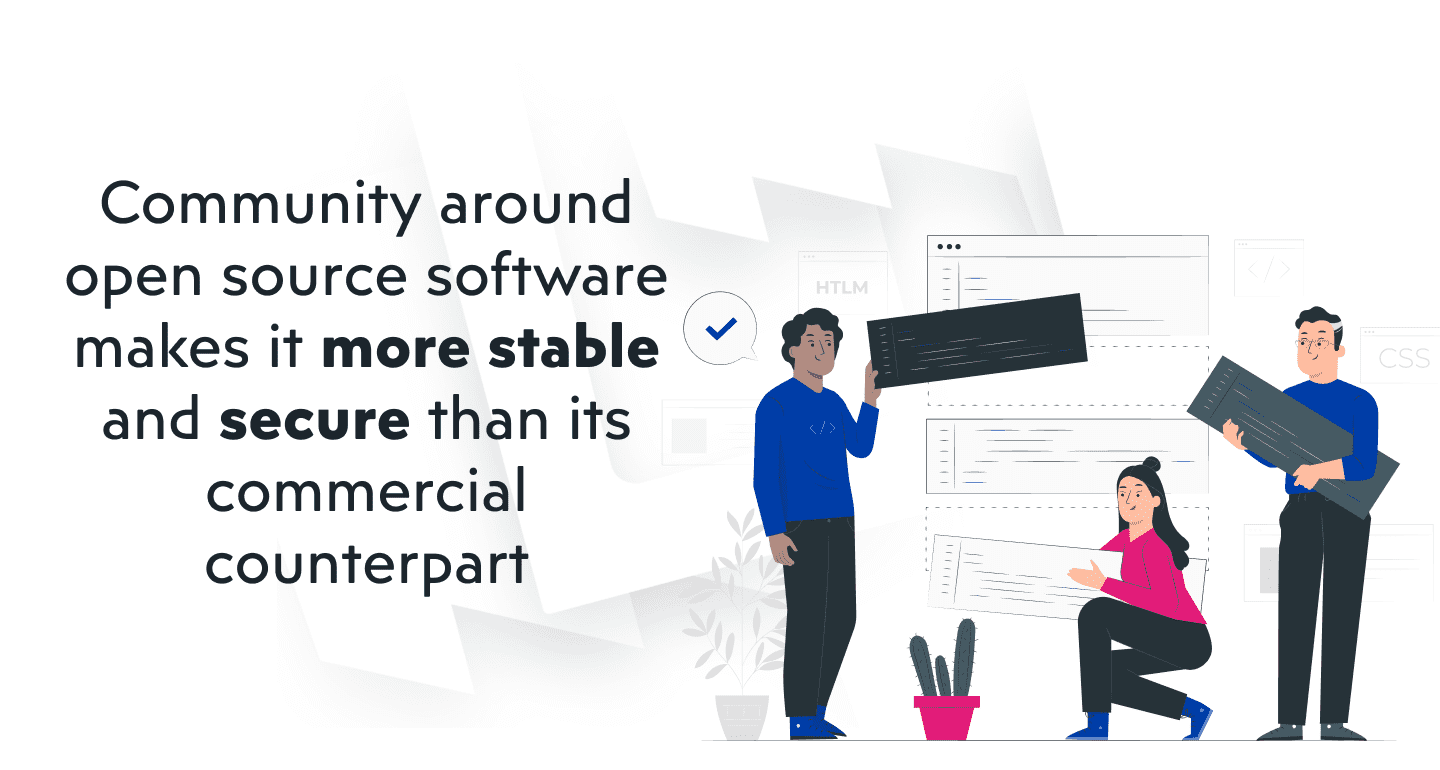
Because the “open” nature of the software, communities are built around it. This means people who don’t necessarily work for an IT company can contribute to improving this software which in turn results in the problems and upgrades being resolved faster and making the software more secure.
Community also makes the open source software more stable. This is because you don’t need to rely on one company to take care of their product. For example: if you use a commercial software of a company that goes out of business, you are stuck with a software that can’t be upgraded so easily, which will cost you money.
On the other hand for an open source software to “die” out, there has to be a great shift in the community in a relatively small time frame. Which is far more unlikely to happen.
Benefits of open source software
Most of the open source software doesn’t require any usage fees. Combine this with the stability and security provided and you will compound reduced costs.
What you need to spend on to realize your open source project is a skilled software development team to tweak it for your needs. The good news is that once they tailor software to your needs it is easily upgradable.
The beauty is that you can add your own features as desired, you don’t even have to work with the same team that made you the software. As it is open source, if you find someone else you want to work with they can easily upgrade it!
Now that we see the benefits of open source software. Let’s dive into digital products that we can implement in our business!
eCommerce – #1 business model for retailers
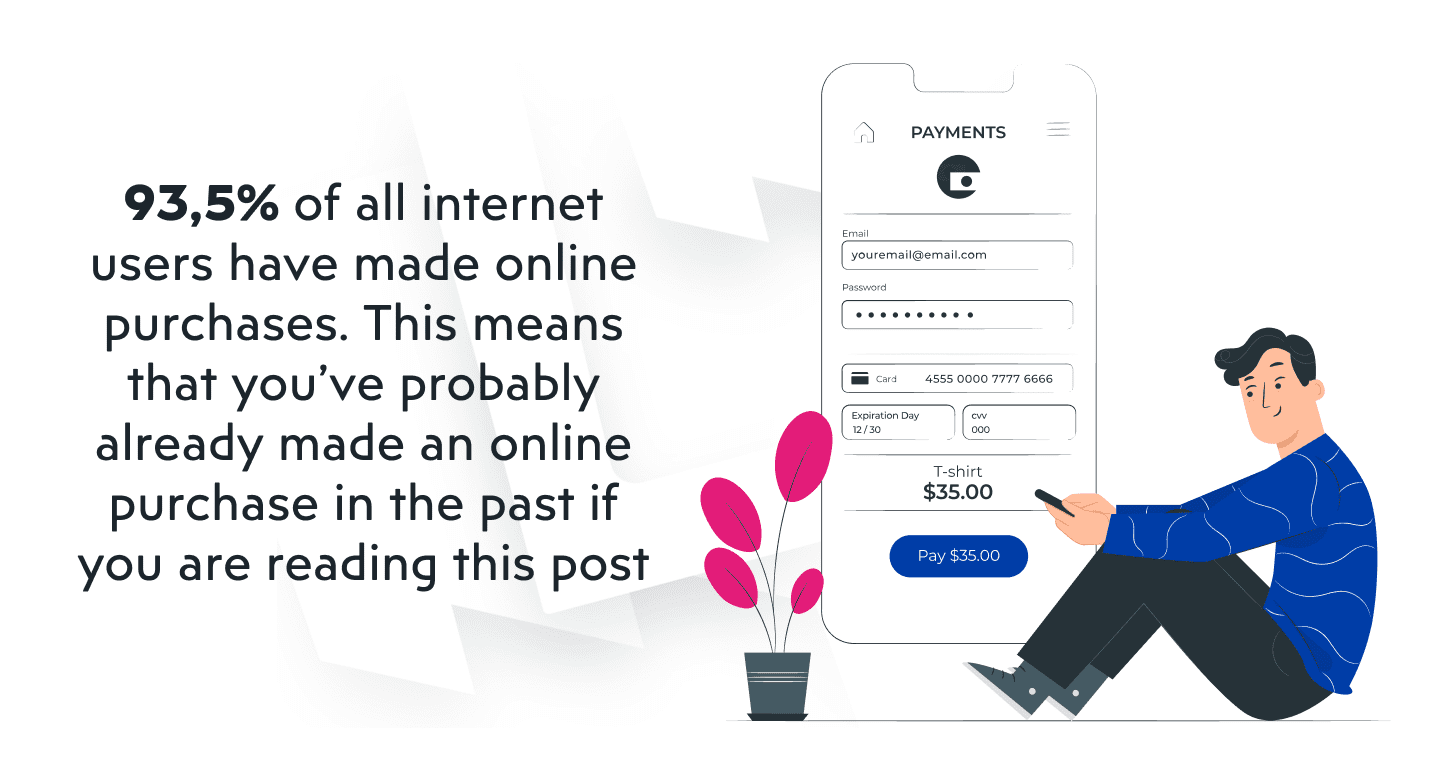
Current world problems made perfect conditions for eCommerce businesses models to rapidly grow.
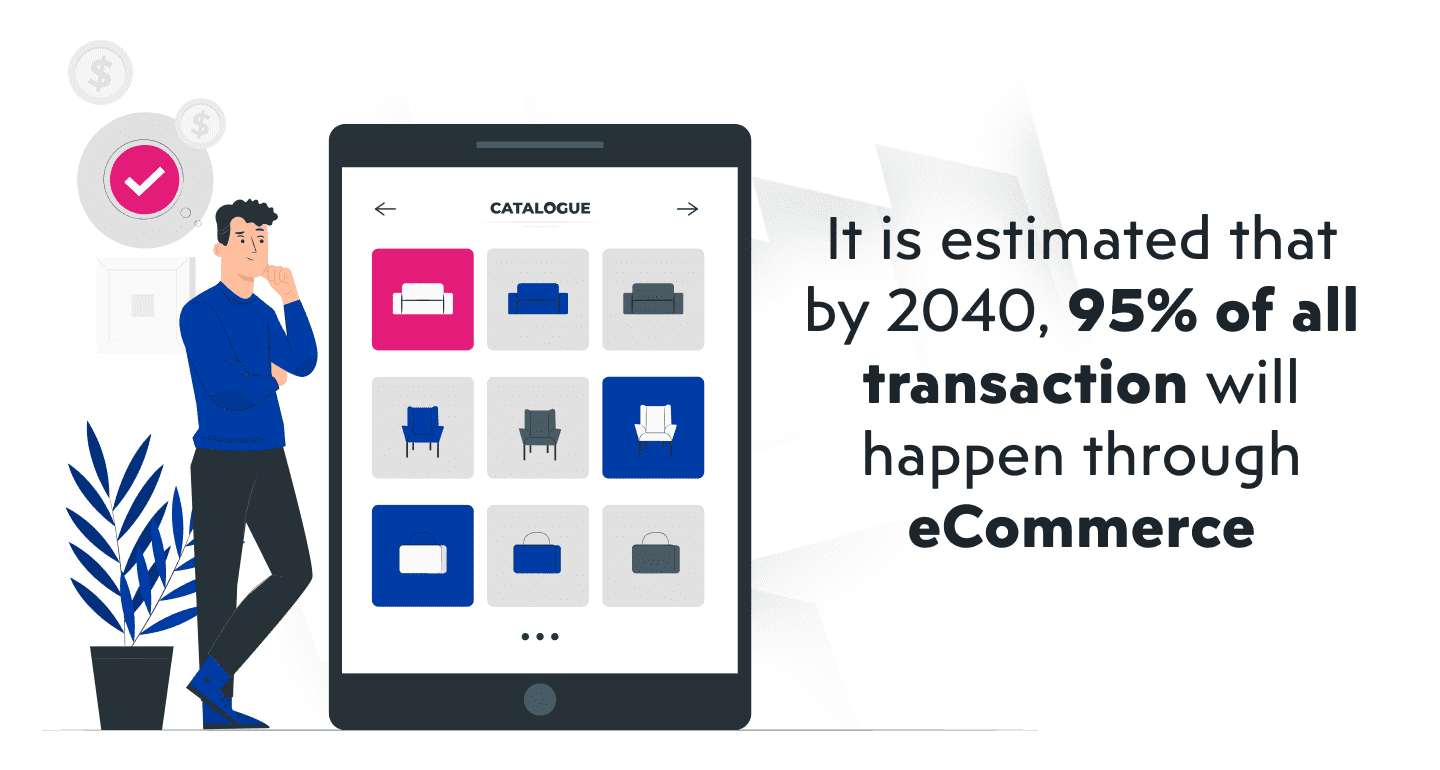
This is a wild stat!
How come? Why are businesses looking for eCommerce solutions? What value do they bring?
First and foremost it is the easiest way to open your retail to anywhere in the world. Not only is it easy, it is also a lot less expensive than traditional retail.
Because your retail business is set up online people can access it 24/7. This by itself can increase your revenue. It can also decrease your costs by reducing employee count and a simpler way to track your transactions.
46% of America’s small businesses don’t even have a website!
With customers being more and more used to buying online, and online retailing growing 23% yearly – now is the time to open your eCommerce store to increase your reach and sales.
Inform yourself more about the benefits of eCommerce to both customers and businesses to learn more about what this model brings to the table.
One of the most promising choices today for an eCommerce platform is Pimcore. Pimcore is an open source platform that contains all the digital products you would need to cover the enterprise. This however doesn’t mean you need an enterprise for Pimcore to prove useful. You can simply implement eCommerce module of the platfrom.
CMS (Content Management System) – manage your online content with ease
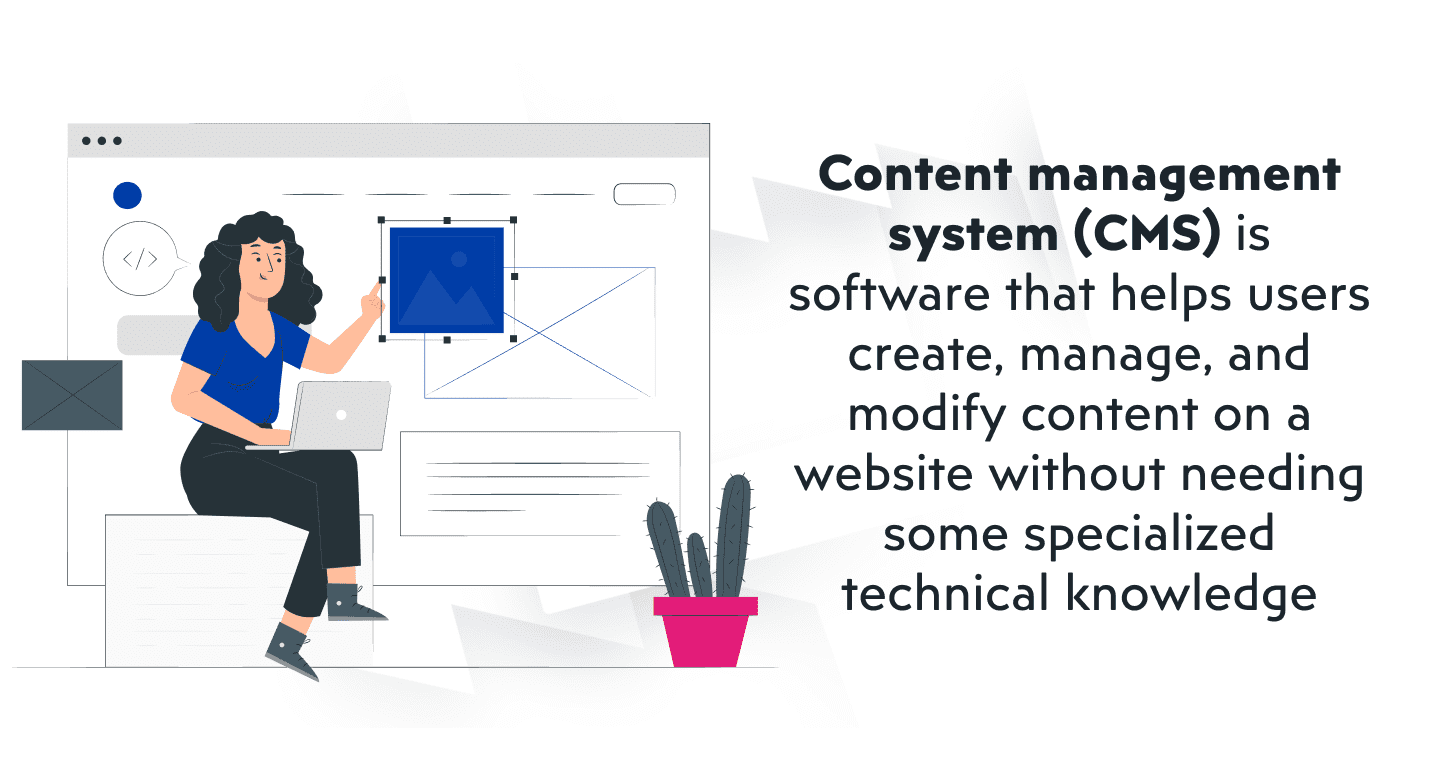
High quality, targeted content is the key to place yourself as an authority on the topic. Content creators know that having one dedicated content channel (ex. Instagram content) is not optimal for todays’ standards.
To achieve maximal exposure you need to branch out on different channels and platforms (both web and mobile) and create appropriate content for each one of them. This is because different people use different platforms for different reasons (to watch specific content) so you can’t expect to create 1 piece of content and post to all of your channels, expecting big results.
As you can see content creation can quickly become really complex when you add these different factors.
Solution?
Connect all of the processes, tools, operations and data into one single place while organizing content into a better workflow from a single source that can publish on all the necessary channels.
For this purpose, CMS software is your ideal digital product!
How does CMS software benefit you?
CMS software usually has some sort of built in templates for content with an intuitive, easy to use interface. Creators love this because publishing content on the websites doesn’t require any specialized HTML knowledge or technicalities, making the process easier.
Besides that, your content creators can easily collaborate with the content management system- reducing data errors (ex. Data duplication, input errors, too similar content etc.) while also increasing the quality of your work environment.
Media management also becomes a lot easier simply because you can upload media content and embed videos without having to work directly with your web server.
Your website with a content management system is easily customizable, flexible (easy tweak + updates) and extensible (add functionality or design without coding) and can provide better control over your data flow.
This makes the content management system dynamic. Meaning you can update or repurpose your content to whatever it needs to be, as opposed to a static content.
You’ll have to have a smart and creative content plan to make the most out of your content, and CMS makes it easier to you!
What Platform should you choose?
Most popular content management system solution today is WordPress. There are a ton of guides on how to set up and configure your WordPress website as people love to talk and write about it. It has a variety of different plans from free to enterprise editions.
Although WordPress is dominating the market at the moment, we would like to recommend another content management system product with a robust content personalization and specific behavioral targeting – Pimcore CMS.
Pimcore content management system is a free digital product with sophisticated marketing automation apps (it gathers real-time contextual data and customer behaviour insights). It can also easily be integrated with any 3rd party platform.
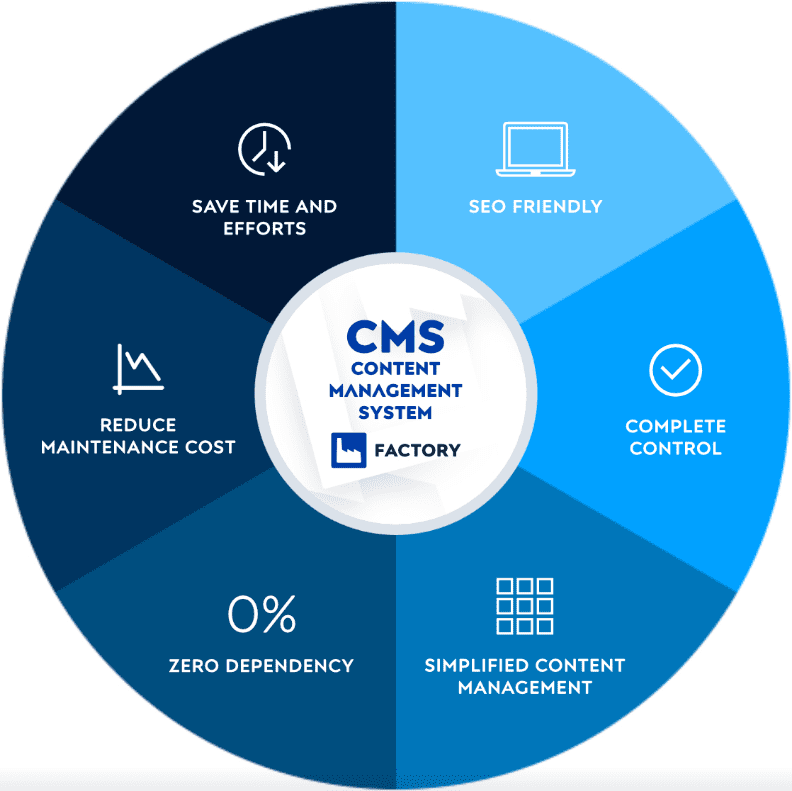
It is a customer focused system, allowing you to create uniquely tailored content across all channels and devices. This is one of the reasons why editors love Pimcore CMS.
If this digital product seems fitting for your needs, you can find all the best features of Pimcore CMS.
Master data management (MDM) – improve the quality and security of your most important data
Modern day business operate with more data than ever before, and it is increasing yearly. With the volume of data expanding you want to secure your most valuable data, but this can prove problematic if you don’t have the right digital product.
Master data is the core data of your business that describe your most valuable business assets. This can be in the form of customers, suppliers, sites, hierarchies, charts of accounts, citizens… As you can see these are core identifiers for your business, and this data can be across multiple IT systems, reaching even beyond your company to partnering businesses.
To manage your master data most effectively you will need a digital product – Master Data Management(MDM) software
Tools of this digital product allow you to secure data across multiple platforms while making appropriate master data edits when necessary. Using this tool will eliminate redundancies, keeping your data consistent in all the different departments.
Keeping the data consistent will lead to improved quality and accuracy of this data. With the increased quality and accuracy you can make more precise data analysis, giving you more valuable insight and potentially saving you money!
Currently the most potent open source master data management solution is Pimcore MDM digital product. It consolidates your master data across heterogeneous and complex system landscapes. Simply put : manage all aspects of any master data
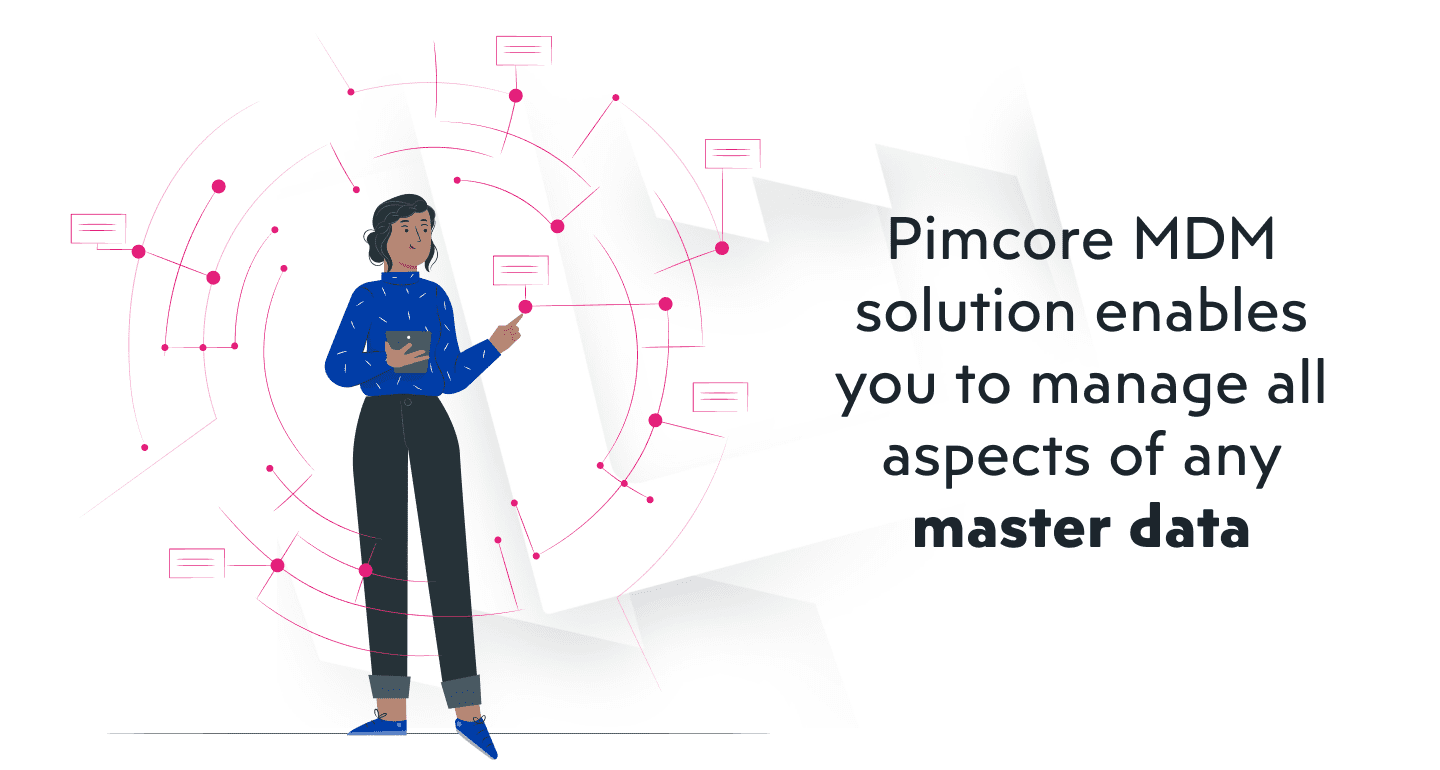
Well what data can Pimcore MDM handle?
These can come in form of:
- Hierarchy
- Structure
- Validation
- Versioning
And enrich said data with:
- Attributes
- Descriptions
- Translations
- Documentations
And other related data.
Pimcores master data management software can be deployed in cloud infrastructure or on premise depending on what you need.
Like other Pimcore digital products MDM is designed for omnichannel publishing, with its functionalities automatically supplying all of your output channel with the right information. Integration with other applications and data is also streamlined and simple.
Data modeling is as flexible as it gets with web-based UI and context sensitive drag & drop operations. Data governance scales and the quality of data is enterprise class.
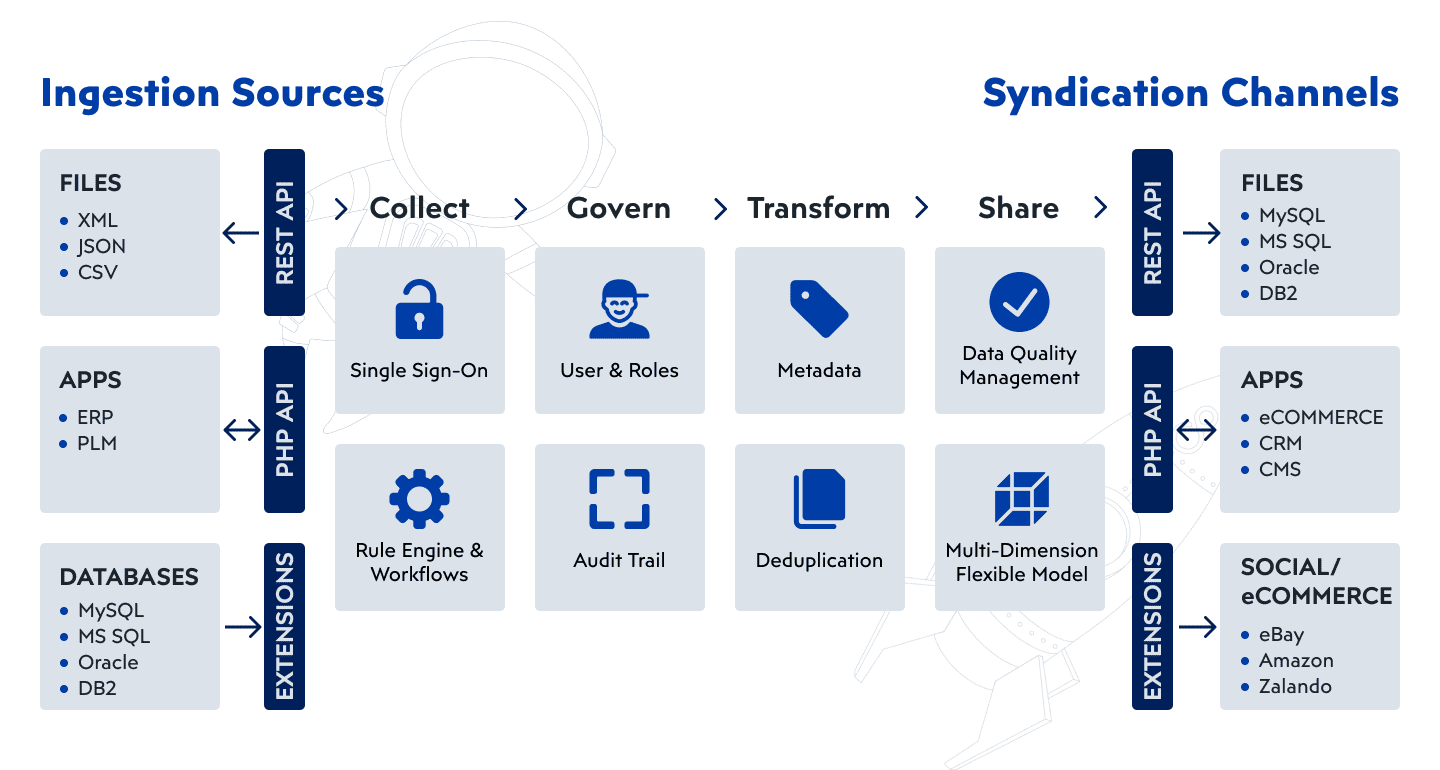
Benefits of Pimcore MDM
What is so great about all of this?
Integrating MDM digital products into your business will result in meeting governance, risk management and compliance requirements. All of this improves your Time-to-Market and accelerates digital transformation of your company while eliminating data silos.
At the end easily manage millions of records with thousands of attributes with the reduced cost (caused by better flexibility, scalability and security of data).
If you are still not sure what master data management is about or how it can benefit your business. Contact a Pimcore development team with your questions or ideas, and you’ll find out how this solution can benefit your situation.
Digital asset management software (DAM) – a single place for all of your digital assets
We’ve discussed your most important data with MDM, but what do you do with all your other digital assets? Maybe you decide to invest in a storage platform like Dropbox which makes it more accessible. But now you can experience a problem where you can’t really effectively manage the distribution of your data through your platform.
As your enterprise grows, you acquire more and more data and before you can get your head around it, you find yourself in a situation where your assets are across multiple storage platforms with unorganized data that slows down your business processes.
If you feel like this can happen to you, or just want to efficiently manage your digital assets – DAM digital product is for you.

How can DAM help my business?
By introducing digital asset management into your business you can increase productivity for some departments.
For example your marketing department can host a centralized content library, making the data they require more accessible to all team members and consequently making their workflow better.
Digital asset management software can give you more options for scalability and branding as it allows processes of production and distribution across multiple channels.
Pimcore DAM is another digital product from Pimcore platform. This digital product provides a solid structure for using and reusing your digital assets in its digital media repository. Digital asset management optimizes data dispersal and processes for content search and it does it with high performance and scalability options.
In the previous chapter on MDM, I briefly mentioned data silos. Data silos come in the form of repositories at a single fixed location, each one scattered in a different department of your organization. This is bad simply because data can’t be accessed if not on this location. So it is a hassle to manage all of that, which again slows down your business processes.
Here is a detailed breakdown about how data silos are negatively affecting your business if you want to find out more about the topic.
DAM solutions eliminate data silos – making your digital assets easier to manage.
Not only that, by streamlining assets and reducing inaccuracies and inconsistencies it helps you to achieve brand consistency.
It also puts your customer at the center of your online business and delivers uniform experience across all available touch points. This provides you with the options to optimize your customer experience in all the stages of their buying cycle.
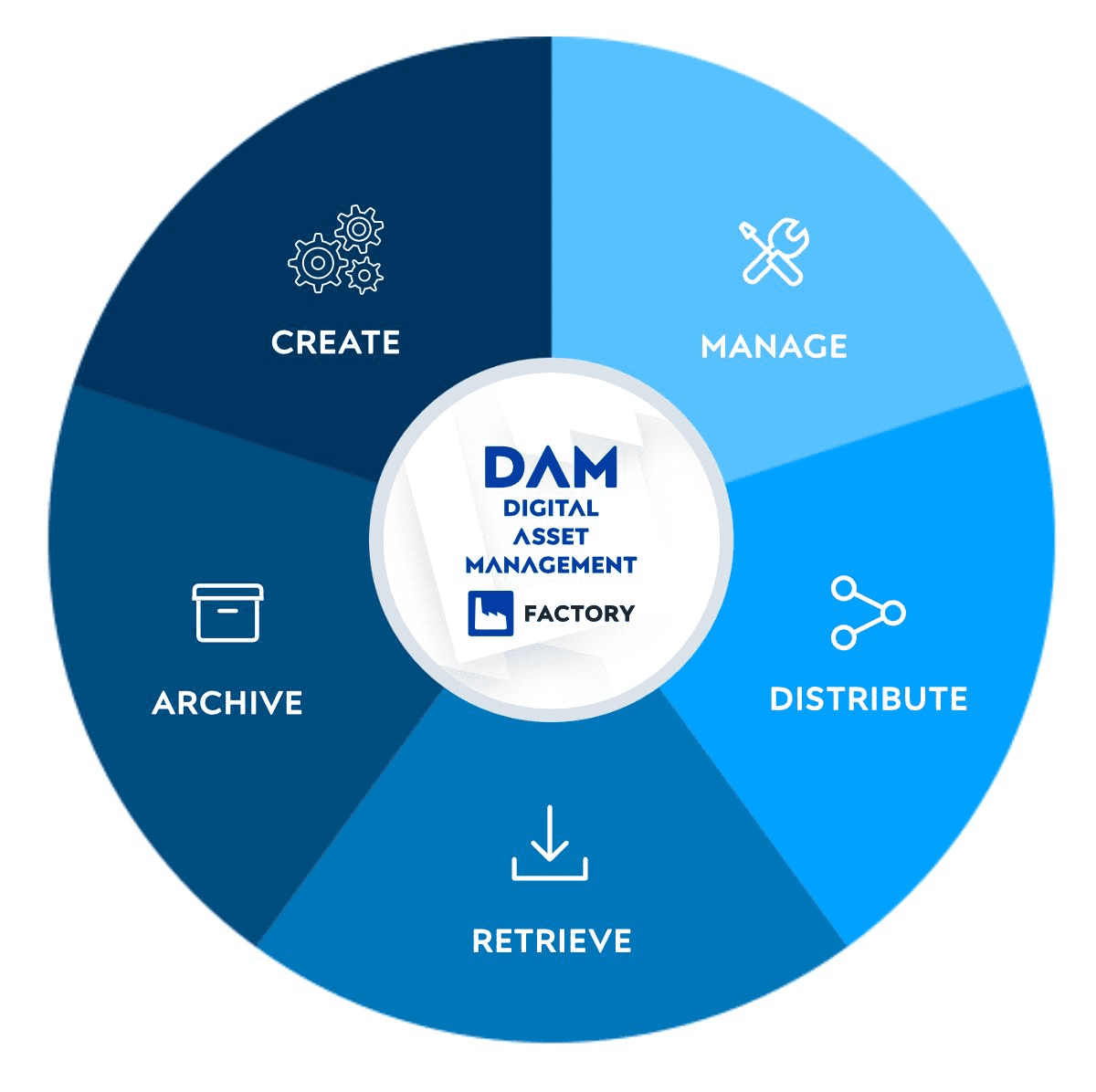
Product Information Management (PIM) – the only digital product you need for your product data
If you have a variety of products you can find yourself where handling the information around them can become complicated with multiple layers about them. In this situation your ideal digital product is Product Information Management (PIM) solution.
This product handles all the data behind your products, improving their quality and accuracy. By having quality product data you can optimize your products for customers to have a better product experience – leading to overall increase in customer satisfaction.
Product information management usually handles 3 main types of information. These come in the form of technical (specifications like material, size, colour, etc…), emotional (images, stories or rich product descriptions to create emotional connection with buyers) or usage ( information on how to use the product).
As the eCommerce businesses have a lot of products this digital product can prove to be a valuable tool for any online retailer. This is because you keep track of all your product info and customer data on the same location.
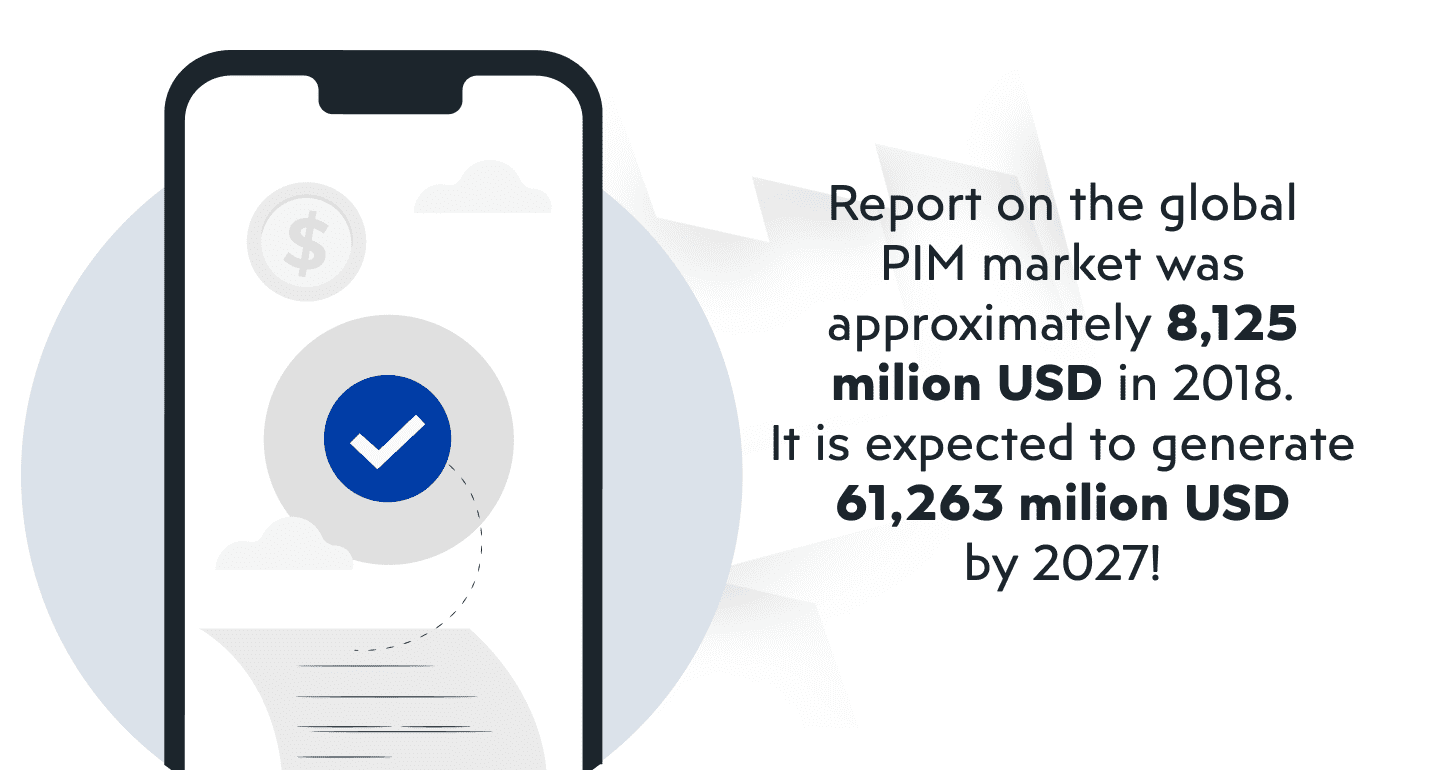
Which PIM seems to be the best
Pimcore PIM solution currently thrives as it brings more to the table with its custom reports , adaptability for enterprises and synchronization of inventory between online and physical stores along with integrated customer data.
It enhances data quality and management along with creating and altering workflows. Making it usable for many different departments, actions and levels of approval for data.
As I wrote before, one of the strongest features of Pimcore platform is its omnichannel presence, making your eCommerce business that much more effective.
Omnichannel, in short, is a communication strategy to attain and retain customers. The key is to remove the friction for your customers by providing a seamless shopping experience on whatever platform they prefer.
Instead of placing product at the center and placing channels around it, omnichannel puts the customer at the center of attention. It shows awareness to their individual buying cycle and allows channels to blend. This offers customer experience within and between channels.
The distinction between channels disappears as a unified view of a customer and their experience emerges.
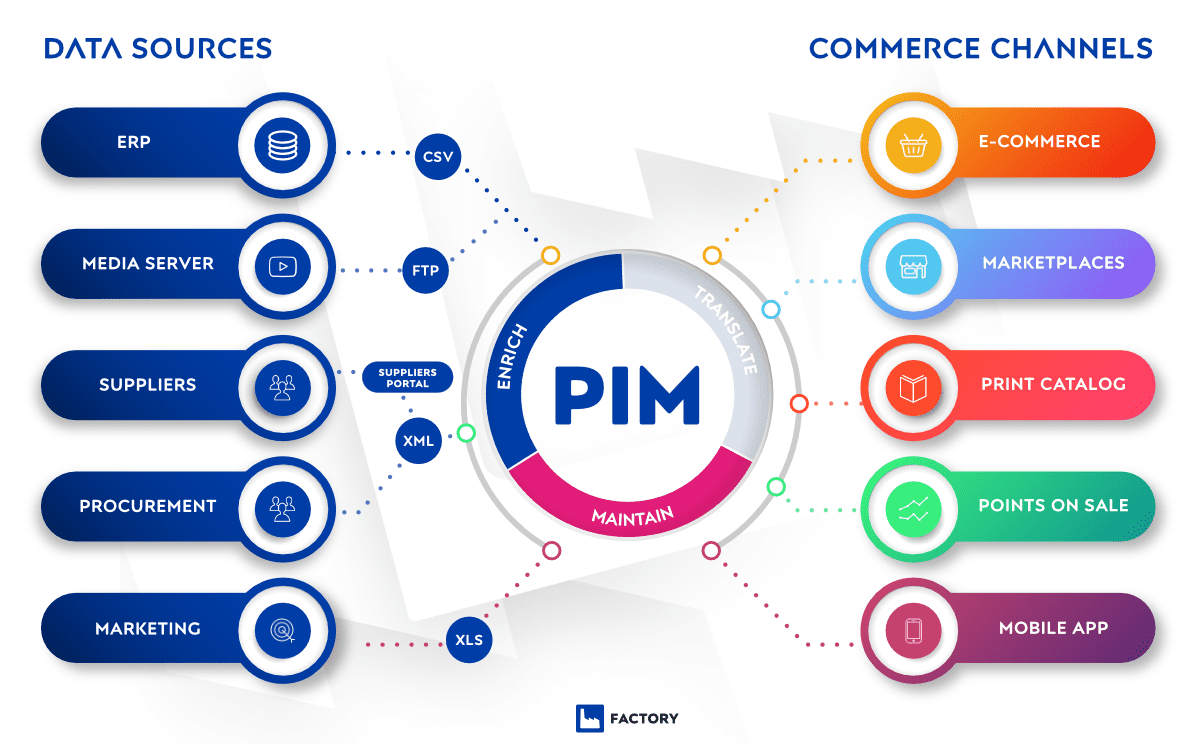
There are more reasons why you as an eCommerce retailer would need Pimcore’s PIM, omnichannel being just a part of the equation. Here’s an article depicting all the benefits of using Pimcore’s PIM system and all of the features that come with it.
Customer Data Platform (CDP) – the digital product for your marketing efforts
If you have a dedicated marketing team they would surely love to have a web-based interface exclusively built for their needs. It has to be more analytical than classic CRM (customer relationship management) solutions. Ideally it will facilitate data collection, segmentation and profiling of customers while assisting in taking actionable steps.
Well why CRM won’t suffice, and isn’t it all a bit too much?
With marketing expanding on more and more active channels, constantly building different campaigns for different platforms and goals we can see how they could use a digital product to help their marketing efforts. CRM was built for higher management and not necessarily for marketers.
This is why a customer data platform solution (CDP) is ideal for your marketing department. It is a dedicated database software used to analyze all the data about your customers.
By analyzing this data your marketers can use their marketing budget more effectively – resulting in more revenue.
What kind of data does this CDP database store for marketers?
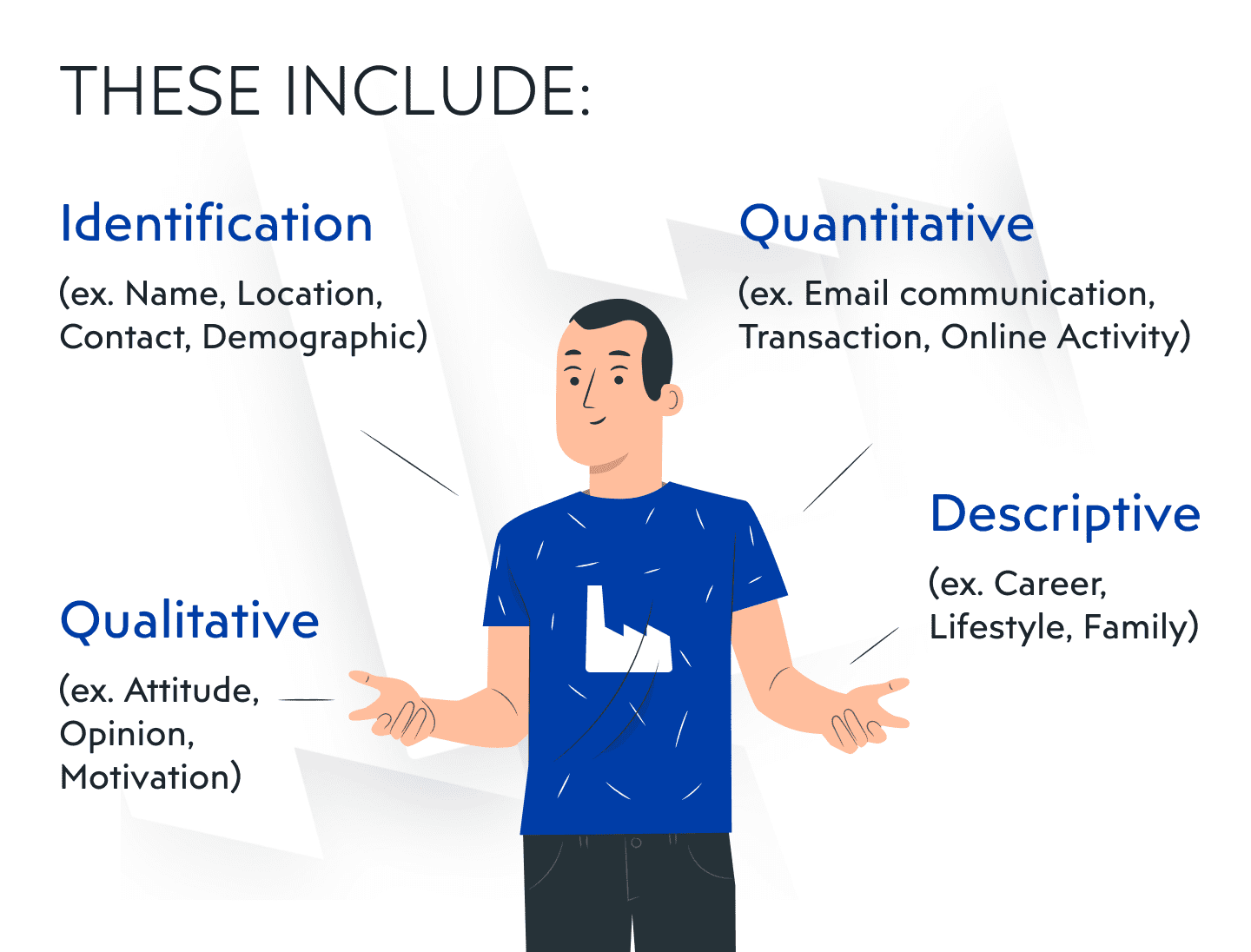
With the Pimcore CDP digital product you are able to create different targeted audiences, segments and groups for effective marketing campaigns. It can also automate any actions connected to customers all according to the parameters and rules you set.
This customer data platform also unifies all the profiles from various devices into a single individual when identified. You can also integrate and model your customer data both online, offline with first or third parties, it is really that powerful.
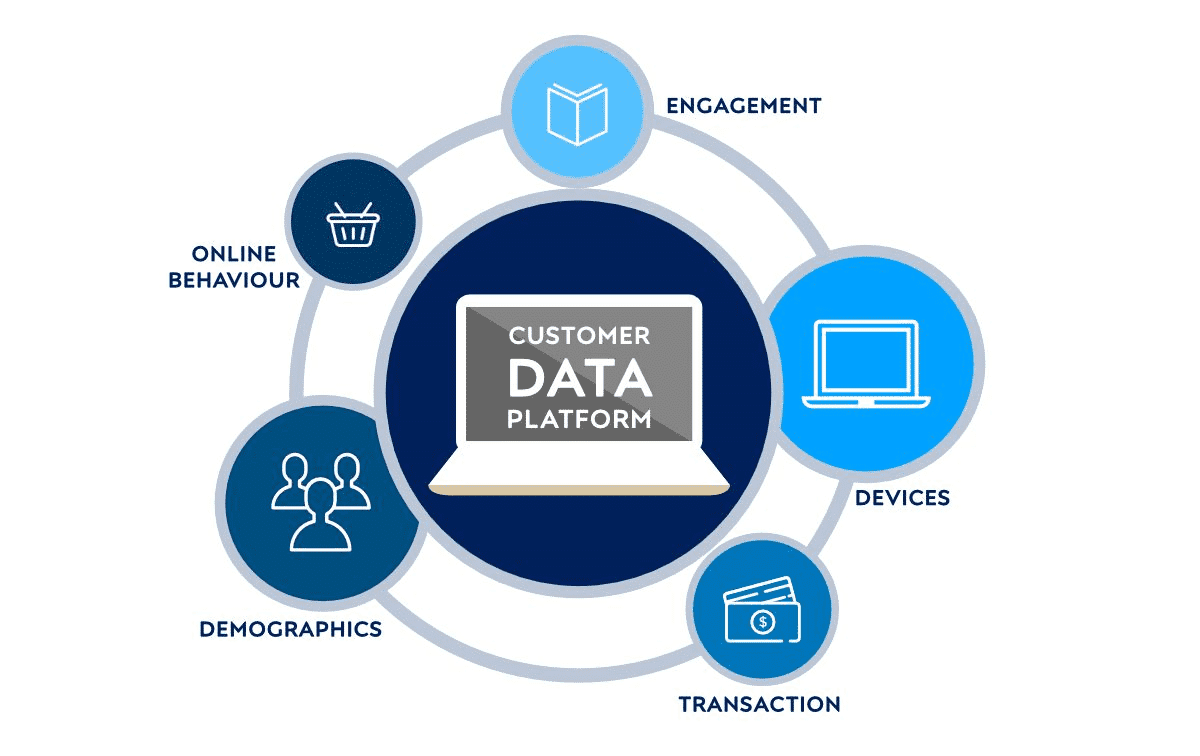
This digital product is primarily designed for marketers, as they can make the most use of this data.
Pimcore – all in one digital product for your enterprise
I’ve briefly reviewed different digital products available to your use. All of them have a different role for your digital efforts, it’s up to you to tap into the potential of these tools.
As we can see more and more companies are using more and more channels for their digital operations. Get ahead of the competition and go omnichannel with Pimcore platform!
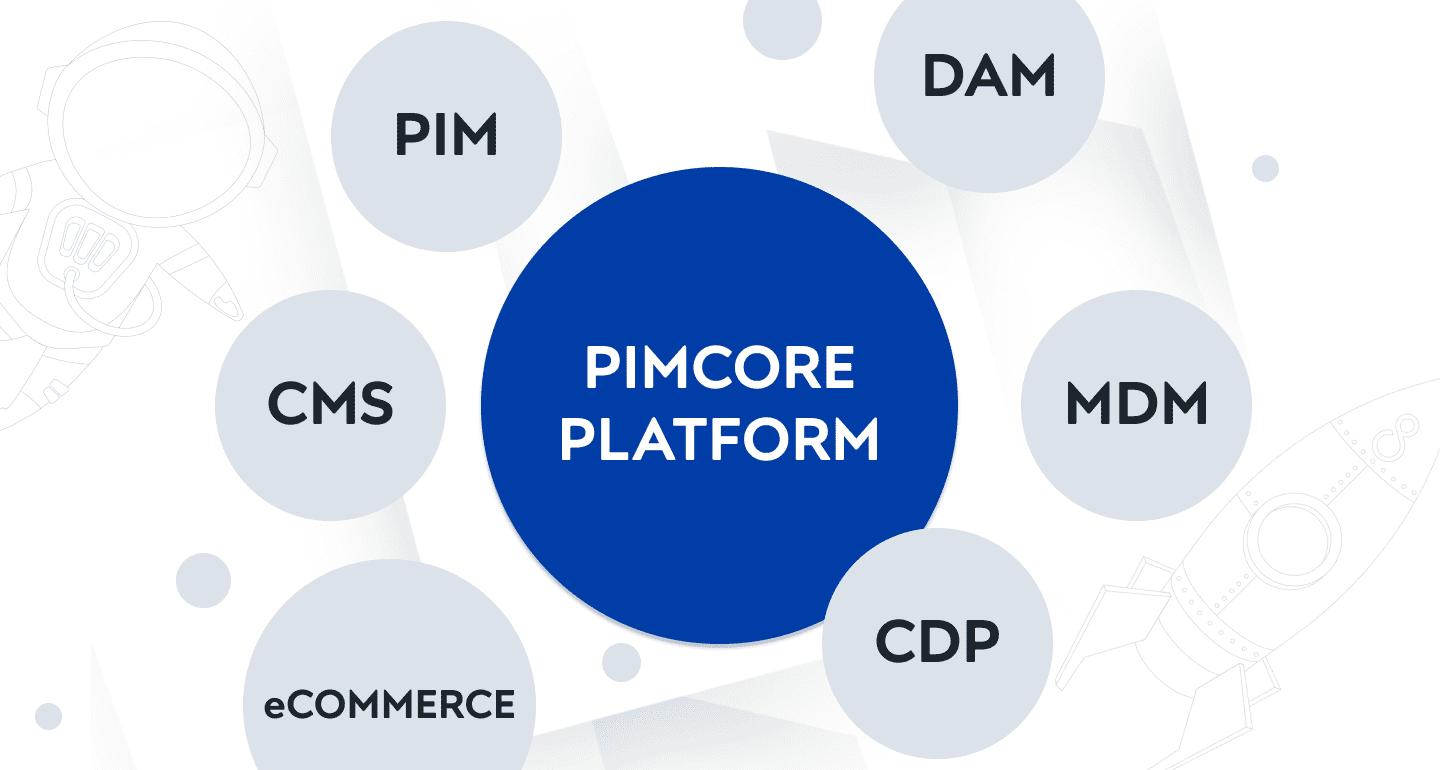
All of these digital products have their use :
- eCommerce as a base for your online retailing
- Content management system (CMS) to better organize your workflow with multichannel publishing
- Master data management (MDM) to secure and edit your master data
- Digital asset management (DAM) to have all of your assets in a central hub, escaping data silos and improving ROI
- Product information management (PIM) to store all your data about the products
- Customer data platform (CDP) as a perfect digital product for your marketing department
For all of these products Pimcore has you covered, although you can find other solutions and platforms for each one of these digital products, I love the flexibility and customization that Pimcore offers. This is why I mentioned its capabilities in each overview of the digital products.
Pimcore is growing day by day, so grab your part of the cake before everyone wants a bite. Audi, Ikea and Intersport are just some of the big names that started to implement this technology.
If you have any questions regarding this post, feel free to reach out to me.
The post 6 Essential digital products for your online business in 2021 appeared first on Tweak Your Biz.
No comments:
Post a Comment